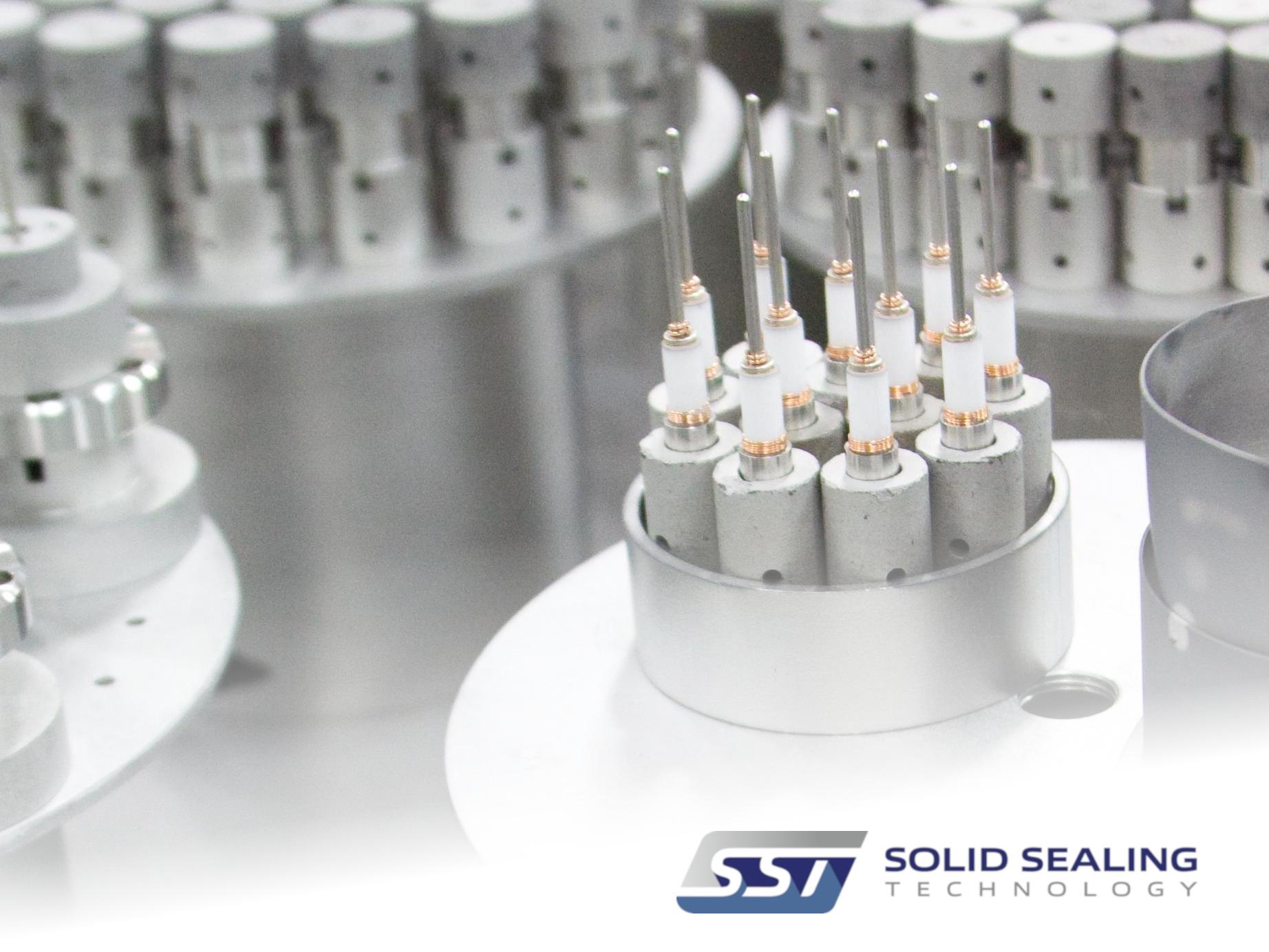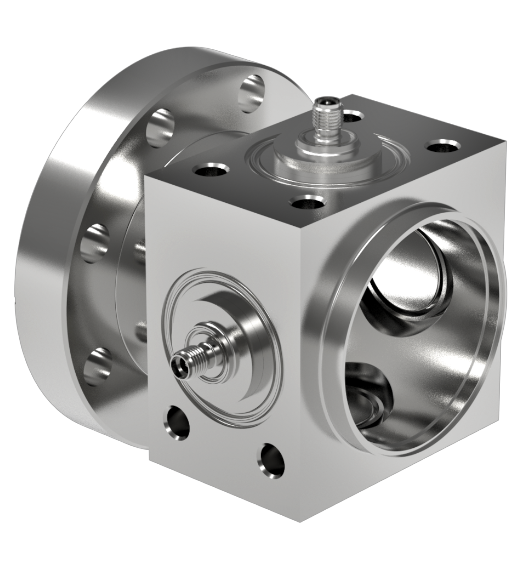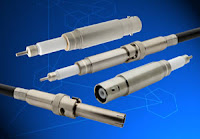Friday, April 25, 2025
Tuesday, June 20, 2023
Welcome to Solid Sealing Technology
Solid Sealing Technology Capabilities.
Experts in hermetic feedthroughs and connectors.
Thursday, March 23, 2023
Custom Vacuum Designs
Over the years xtronix has delivered many custom designed products, both systems and components. xtronix custom designs removes the burdensome task of design engineering, parts procurement, assembly, testing and final qualification. We work with suppliers, often companies we actively distribute products of, to obtain the best price and delivery, leaving our customers more time to focus on their own applications and less time worrying about all the intricacies of custom designs. Solid Sealing Technology (SST) partners with us for various custom feedthrough assemblies. Here is an overview of their capabilities:
The basis of most Solid Sealing Technology products is ceramic-to-metal sealing and/or glass-ceramic sealing. The process of making your custom part(s) begins with a comprehensive review of engineering needs that ensures a complete understanding of the application’s requirements. A skilled team will define a production plan that gets you your hermetic feedthroughs and connectors quickly.
MATERIAL SOURCING
SST materials and components are sourced from world-class suppliers. Detailed documentation and specifications are available for all custom hermetic feedthroughs and connectors to ensure the materials meet your needs.
PRECISION CLEANING
All components at SST must meet strict standards and are processed through a customized cleaning system. The standardized process includes a specialty aqueous cleaner followed by a cascade DI water rinse. This cleaning process has been used and approved by key customers like Sandia National Labs and the United States' Army. The same process can be used for precision cleaning of metals, ceramics, and glass and is suitable for UHV environments. SST will ship your custom hermetic products sealed so they are ready to use out of the box.
MANUFACTURING
With your production plan in place, SST will begin manufacturing your parts. Whether you are creating a completely new custom hermetic product or modifying one of our many hermetic feedthroughs or connectors, we offer a technology suite that will meet your needs. SST offers metalizing and plating of ceramics, active metal joining, vacuum and hydrogen brazing, glass-ceramic sealing, TIG welding, spot welding, machining, and mechanical assembly.
FINAL INSPECTION & TESTING
SST verifies all critical requirements before shipping, and the customer service team will provide any product-related resources you need. SST offers vacuum-bagging and other special packaging options if needed. Parts will arrive clean and ready to use out of the box.
- Helium Leak Detection – 100% of SST parts are leak tested before shipping. Parts are tested to a leak rate of less than 1x10^-10 atm.cc/sec
- Pressure Testing - Hydrostatic Pressure testing up to 30,000 psi
- Electrical Testing – Continuity, HiPot/DWV (Dielectric Withstanding Voltage), Megohm Resistance, Capacitance, Heat Rise Testing
- Physical Testing - Torque, Push-Pull Testing, Engagement Force Measurement
- CMM, Vision Systems, Go/No-Go thread and pin gauges, Surface Profilometer, and certified metrology equipment for inspection and analysis
- XRF Thickness Testing of Coatings & Material Verification
- Basic Thermal Testing: LN2 exposure, vacuum bakeout
- Fiber Optic Insertion Loss Testing
Thursday, November 3, 2022
Selecting the best crystal for your coating process
A quartz crystal microbalance (QCM) takes advantage of the piezoelectric effect found in quartz crystals. Application of an electric potential across the quartz crystal induces mechanical shear strain in the crystal. If the polarity of this electric potential is reversed, the strain direction reverses. Rapid oscillation of the electric potential polarity leads to vibrational motion of the quartz crystal. Under the proper conditions, this vibration can induce an acoustic standing wave between the two crystal faces. The frequency of the standing wave is proportional to the thickness of the quartz crystal. If additional material is uniformly deposited on the face of the crystal, the additional thickness will decrease the resonant frequency of the acoustic wave. This frequency shift due to mass deposition may be correlated to the absolute mass deposited via the following substituted form of the Sauerbrey equation:
Monday, February 21, 2022
WELCOME TO SOLID SEALING TECHNOLOGY

Tuesday, January 5, 2021
Solid Sealing Technology Starts 2021 With New Website


Thursday, September 14, 2017
Simplified fabrication process for high-efficiency solar cells
In the quest for more efficient crystalline silicon solar cells with low manufacturing costs, one of the most promising approach is to bring all electrical contacts at the back of the device. This suppresses all shadowing at the front, increasing the current and the efficiency. This approach generally requires several delicate processing steps, because well-defined narrow negative and positive contact lines need to be created, which will then collect the electrons (negative charges) and holes (positive charges). This requires usually several steps of masking of photolithography to create the alternated positive (+) and negative (-) areas.
Saturday, March 26, 2016
Simple and Fast Cryocooling for Thin Films
- - Critical temperature characterisation
- - Van der Pauw measurements
- - Seebeck coefficient
- - Thermal properties and many more
Monday, February 1, 2016
The Future of Thin Film Control
Featuring integrated display, intuitive GUI, and durable architecture, Eon-ID™ offers an all-inclusive design that adapts easily to a variety of settings – ranging from industrial to laboratory to clean room to research environments. Eon-ID™ integrates well into existing rack thin film systems.
Monday, December 7, 2015
ORNL process could be white lightning to electronics industry
Wednesday, June 24, 2015
Applications for the CryoLab cryocooler
We recently launched a new line of plug-n-play desktop cryocoolers for applications requiring cooling of small samples to 90 K or further down to 75 K (i.e. SQUIDs).












